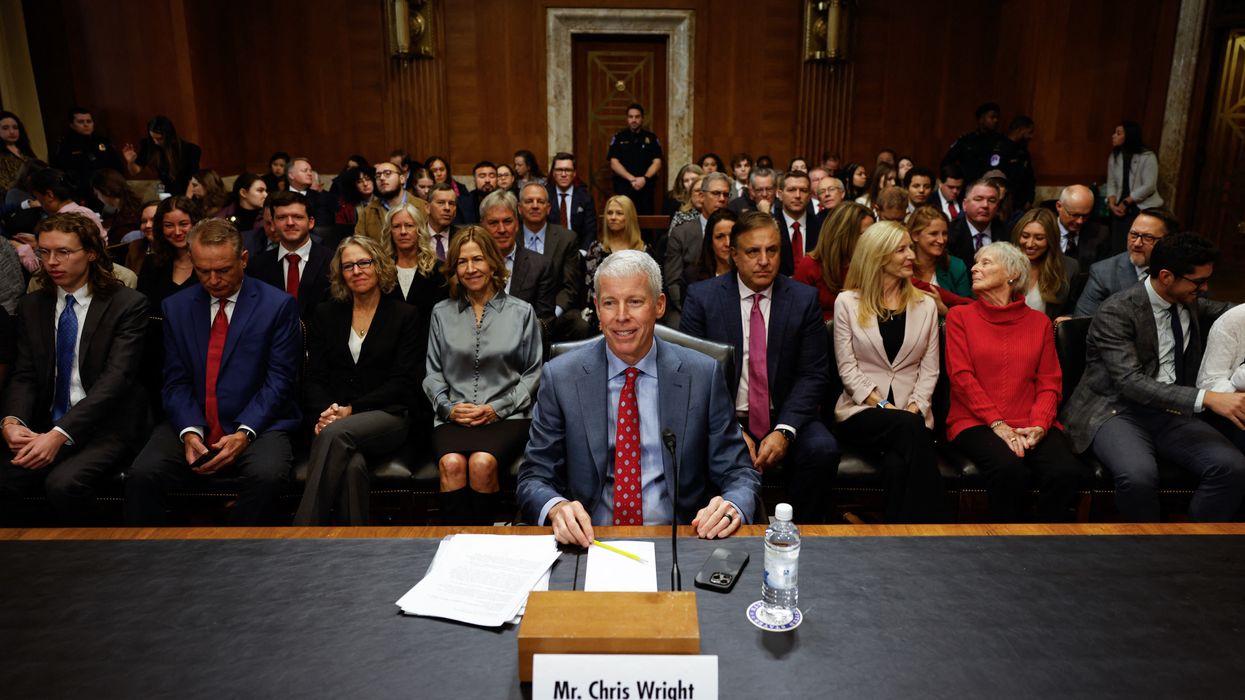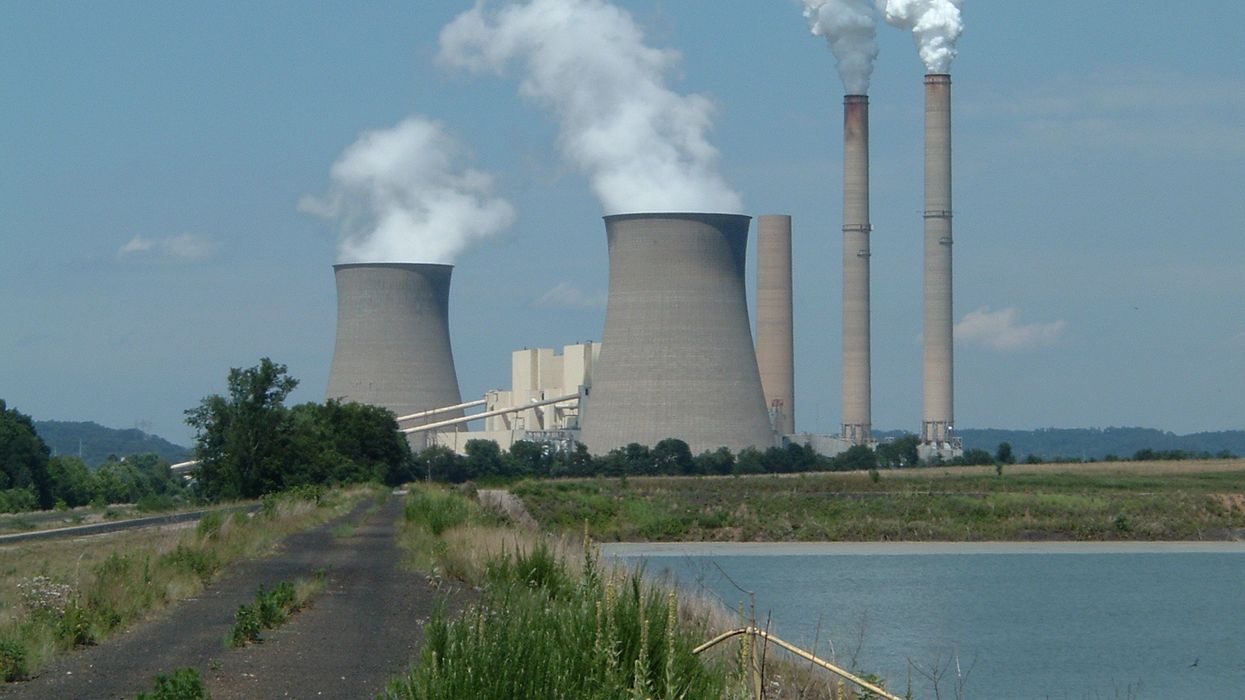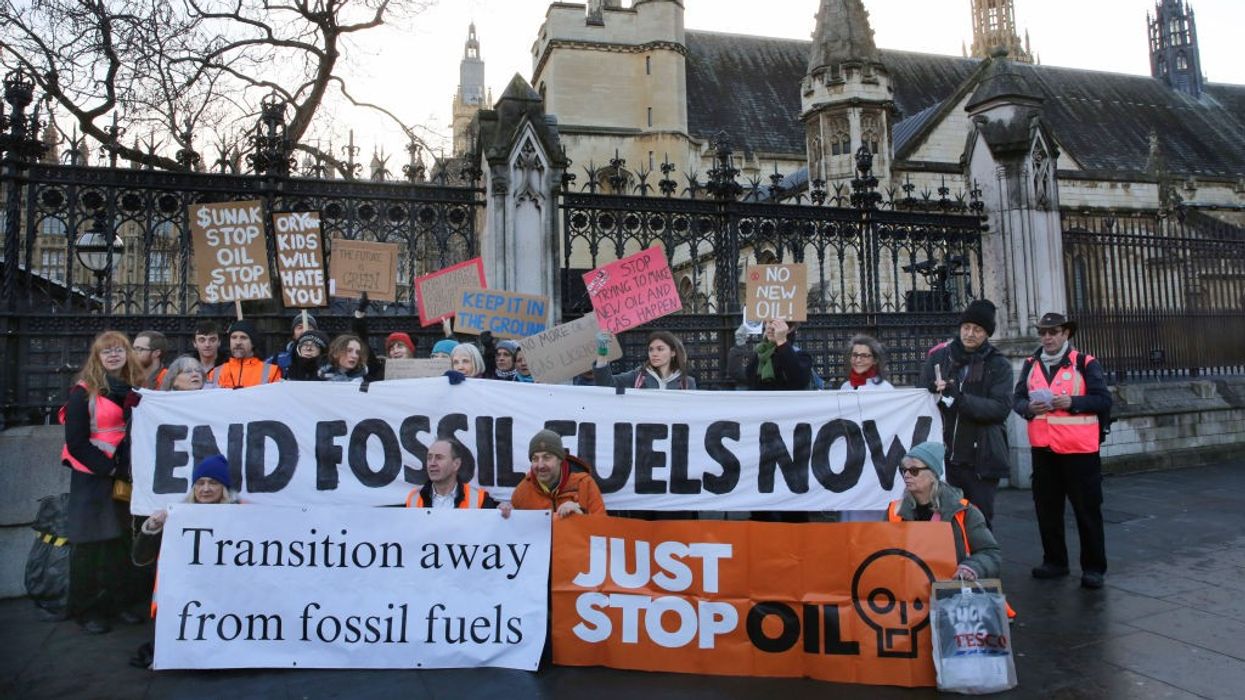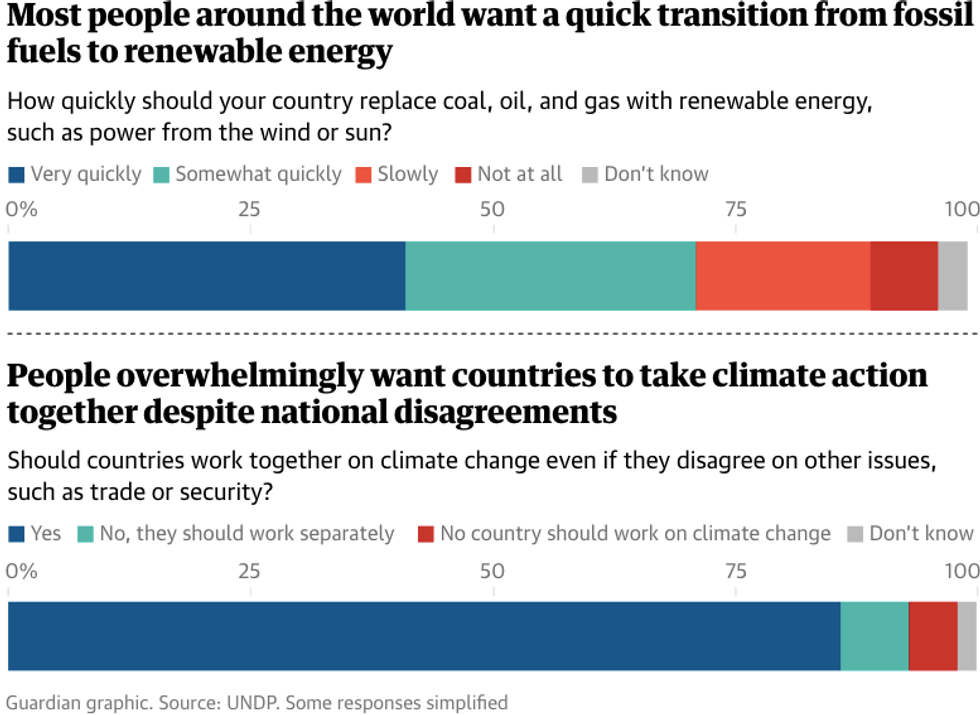No Chris Wright, Destroying the Planet Won’t Solve Energy Poverty
Trump’s new energy secretary would like you to believe that “Zero Energy Poverty” and Net Zero emissions by 2050 are incompatible goals, but this could not be further from the truth.
Chris Wright, who was recently confirmed as the new secretary of energy, has been famous for years as one of the more unapologetic proponents of fossil fuels. In 1992, Wright founded Pinnacle Technologies, an early leader in the hydraulic fracking business, and later made his fortune as the CEO of Liberty Energy, one of the largest oilfield service firms in North America. In 2023, he made headlines for a series of inflammatory statements disputing the science of climate change.
Now Wright has taken a different tack on climate—less outrageous, but no less dangerous. At his Senate confirmation hearing last week, Wright claimed that he didn’t deny the existence of anthropogenic climate change; he only denied that climate change warranted any reductions in fossil fuel production. To make his case, Wright spoke in abstractions about “tradeoffs” and “complicated dialogue.”
Then came the doozy: Poor countries like Kenya suffered from sparse access to propane fuel, Wright said, and only fracking could deliver the low prices to make up for those shortfalls.
Wright claims to be working on behalf of the global poor, but if he were, he might heed their repeated calls for emission reductions in the United States and other wealthy countries.
Wright has been quietly developing this specious argument for years: that addressing energy poverty, especially in the Global South, requires untrammeled fossil fuel production, no matter the damage to the planet. In Liberty Energy’s 2024 annual report, Bettering Human Lives, Wright laid out his case for hydrocarbon extraction. “Only a billion people today enjoy the full benefits of a highly energized lifestyle,” Wright wrote, while “7 billion striv[e] to achieve the lifestyles of the more fortunate 1 billion.” Without access to reliable natural gas, “over 2 billion people still cook their daily meals and heat their homes with traditional fuels, [including] wood, dung, agricultural waste, or charcoal,” putting them at risk of acute respiratory disease from air pollution. The only remedy, according to Wright, is more fossil fuels like gas.
This weaponization of global energy poverty is so insidious because it takes a legitimate issue—inadequate access to reliable energy for billions of people around the world—and turns it into a neat talking point for the destruction of the planet. Energy insecurity is a real challenge for the Global South, with over 3 billion people estimated to suffer from energy poverty of some kind. But so is climate change, which the World Bank projects will push up to 135 million people into poverty by 2030, and which is already fueling extreme weather, conflict, and migration, from Micronesia to the Sahel.
Wright would like you to believe that “Zero Energy Poverty” and Net Zero emissions by 2050 are incompatible goals. According to Wright, “solar, wind, and batteries… will not, and cannot replace most of the energy services and raw materials provided by hydrocarbons.”
But this could not be further from the truth.
In a 2021 report, the Rockefeller Foundation report found that renewable energy could end energy poverty worldwide at a cost of just $130 billion a year, less than a sixth of what the United States currently spends on defense each year. Moreover, the report found that such a transformation would create 25 million jobs across Africa and Asia, more than 30 times the number of jobs created by a comparable investment in fossil fuels.
Wright’s case for hydrocarbons is based on a bad faith conflation of existing realities with possible futures. In Bettering Human Lives, Wright claims that electricity currently “delivers only 20% of total primary energy consumption” in order to challenge clean energy’s viability as a substitute for hydrocarbons. But as Wright himself knows, a central feature of the green transition will be the electrification of everything, from transportation to home heating to heavy industry. Present shares of energy usage for electricity do not provide an accurate picture of future consumption patterns .
In the case of the Global South, where energy poverty is most acute, the key will be the implementation and scaling of distributed renewable energy (DRE) systems. Unlike traditional grids, which often carry power over vast distances, DREs generate electricity from clean energy sources close to home. With the cost of batteries and solar PV both falling over 90% in the past decade, these systems are more affordable than ever. The Roosevelt Foundation sees DREs driving the clean energy transition across Sub-Saharan Africa and South Asia, with mini-grids providing power for a dizzying array of technologies: “solar lanterns, ice-making factories used by fishing communities, milk chillers and irrigation pumps for farmers, refrigerators and life-saving medical equipment in clinics and hospitals, and more.”
Some elements of the climate movement have pushed a degrowth agenda that fails to reckon with the energy needs of many countries in the Global South. Calls for developing nations to abruptly cut off coal consumption, for example, ring hollow if they are not accompanied by meaningful assistance to pay for more expensive alternatives. But for the most part, the climate movement has recognized the inequities in historical development and emissions patterns, and placed the burden squarely on the Global North to drive the decarbonization process.
Wright claims to be working on behalf of the global poor, but if he were, he might heed their repeated calls for emission reductions in the United States and other wealthy countries. For years now, developing countries have been asking the nations most responsible for the climate crisis to decarbonize fastest, in order to buy time for poorer countries to catch up. They have also called for additional climate finance to assist with mitigation and adaptation efforts. At COP29 in November, rich countries pledged $300 billion a year in climate finance by 2035, but research suggests developing nations need closer to $1 trillion a year to protect their most vulnerable populations. If Wright were sincere in his concern for the plight of the global energy poor, he would support these initiatives.
Of course, he will do no such thing. Wright’s patron in the White House has already made the new administration’s policy clear. On his first day back in office, President Donald Trump pulled out of the Paris climate accords—and froze all foreign aid for 100 days. Now Trump appears to have shuttered USAID entirely. To those observing from abroad, Wright’s bad faith appeals to global poverty must appear as one more indignity from an administration inclined to offer little else.



